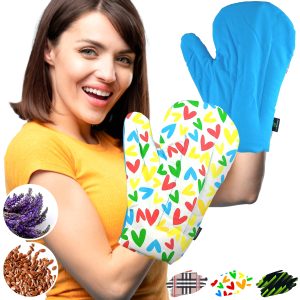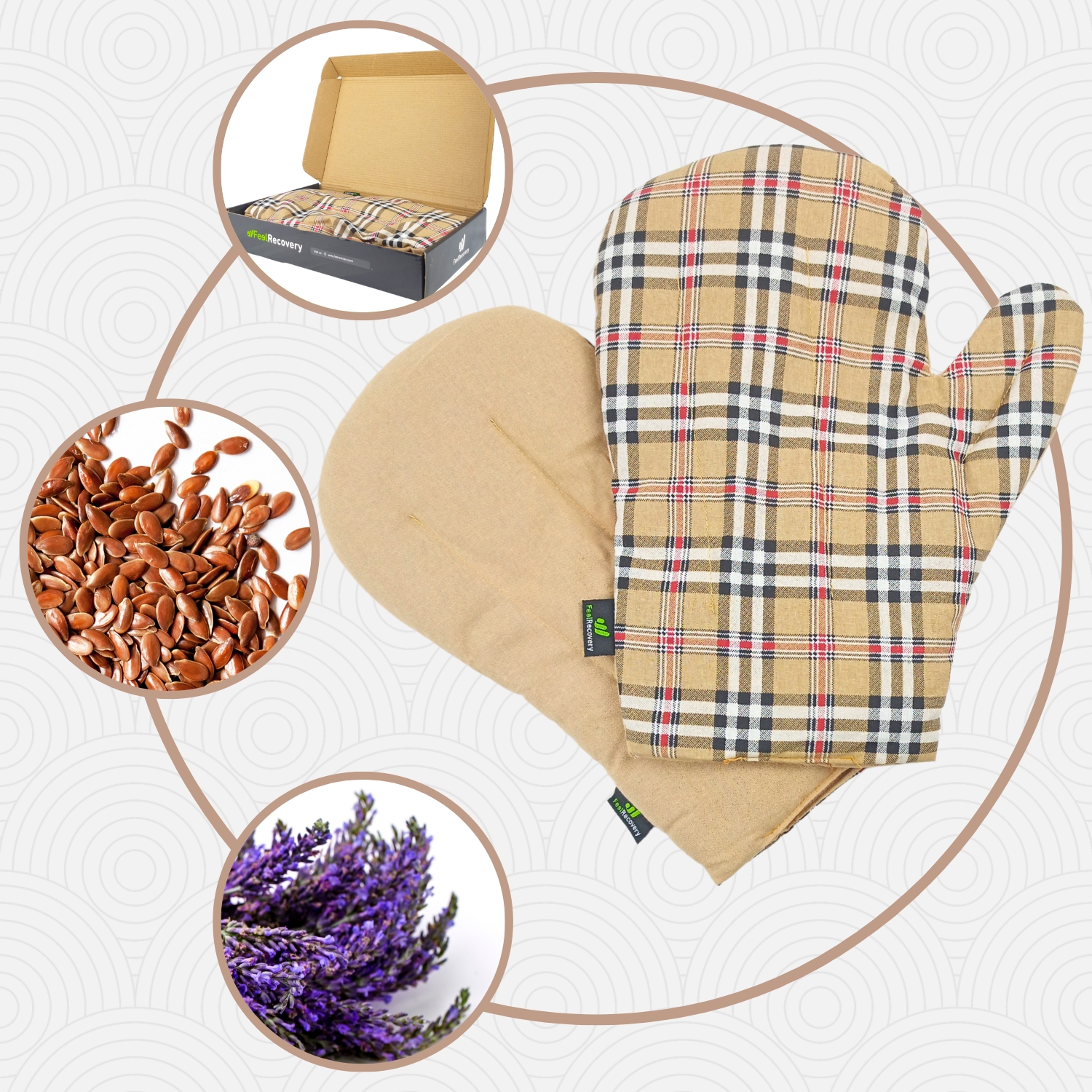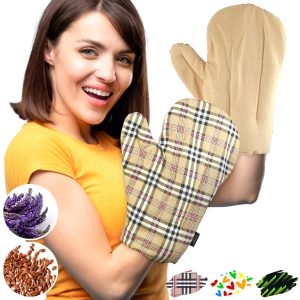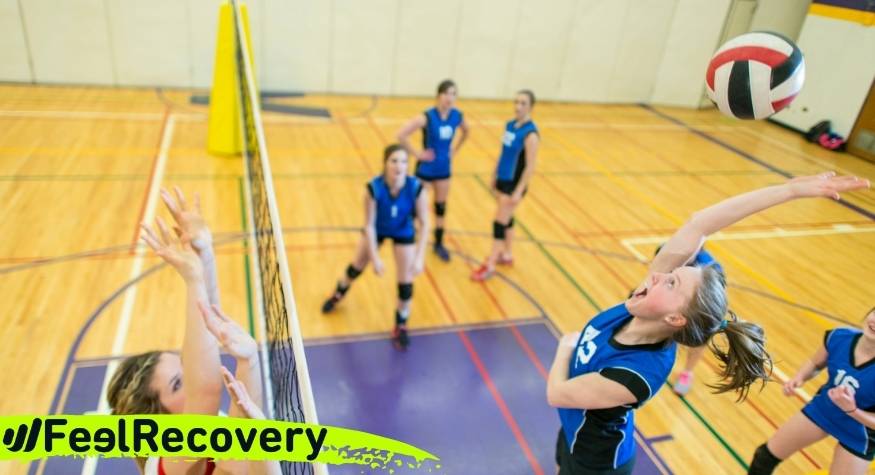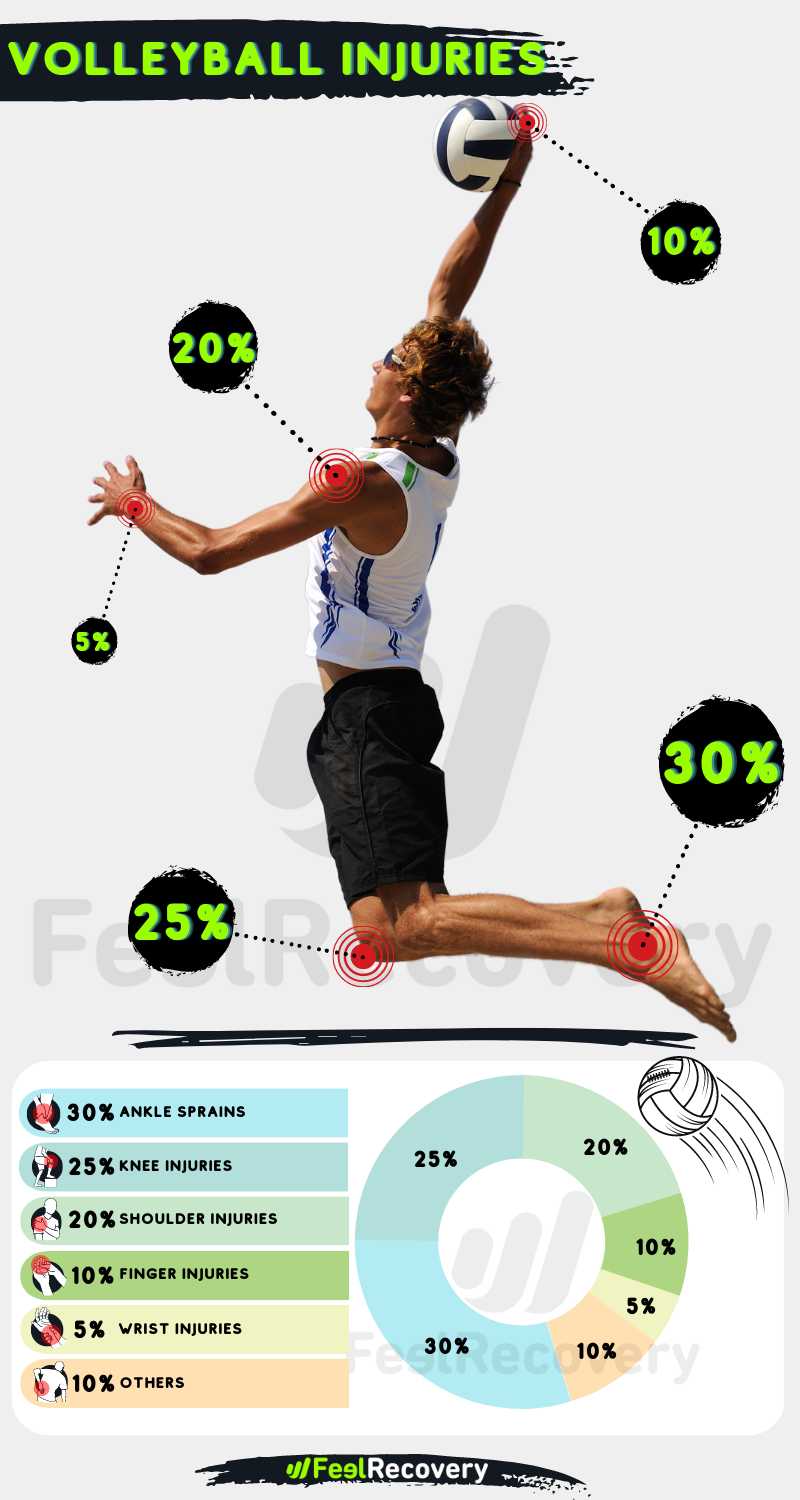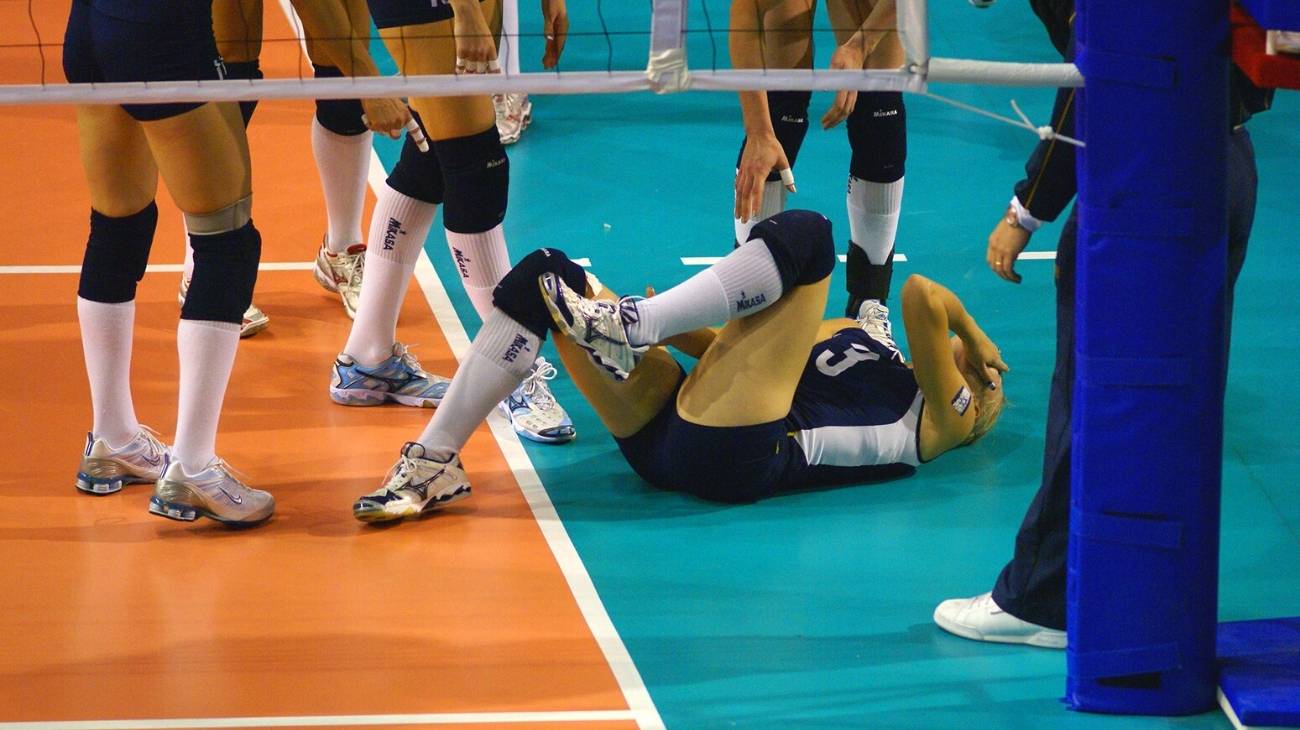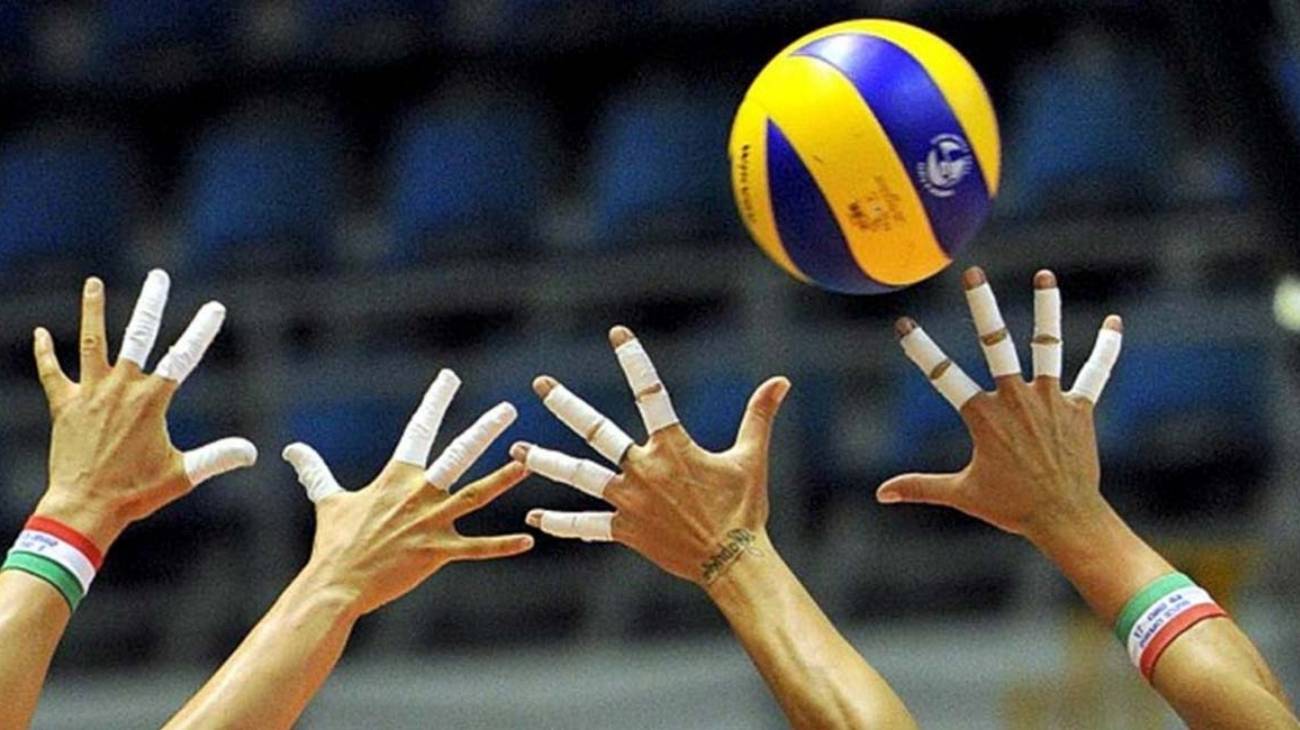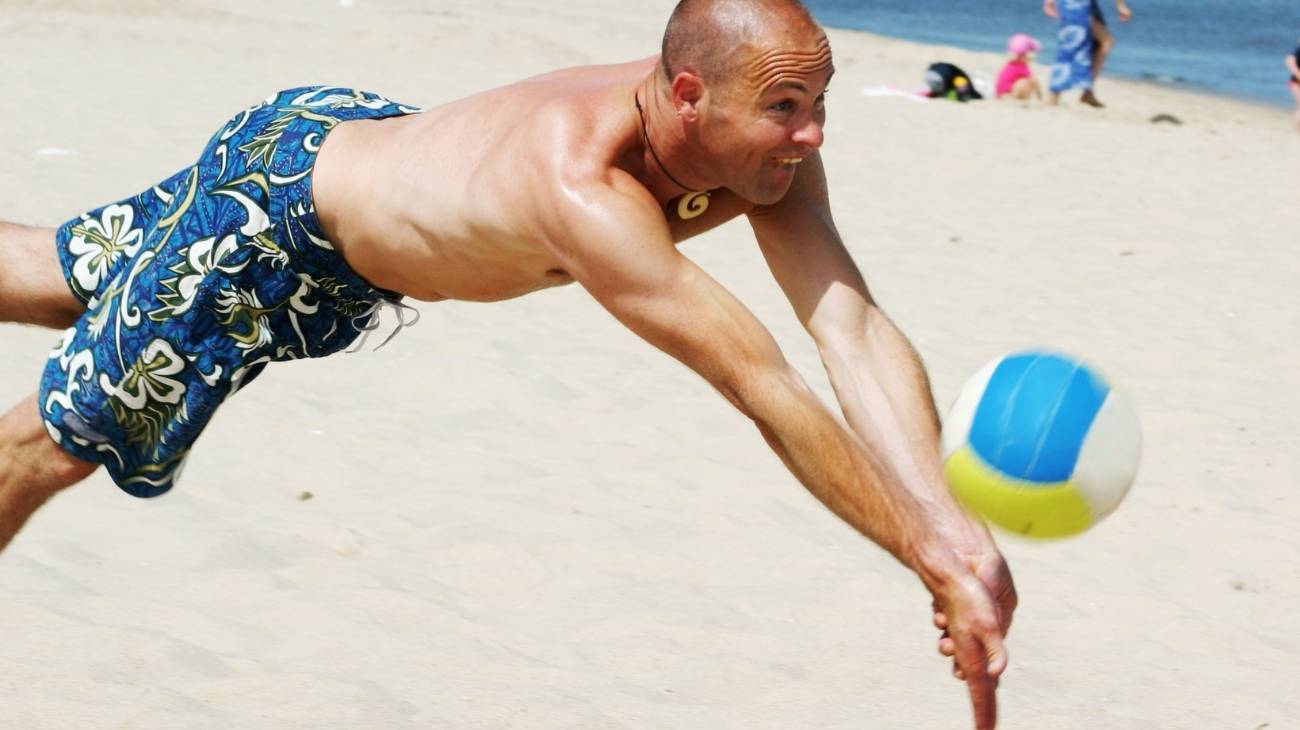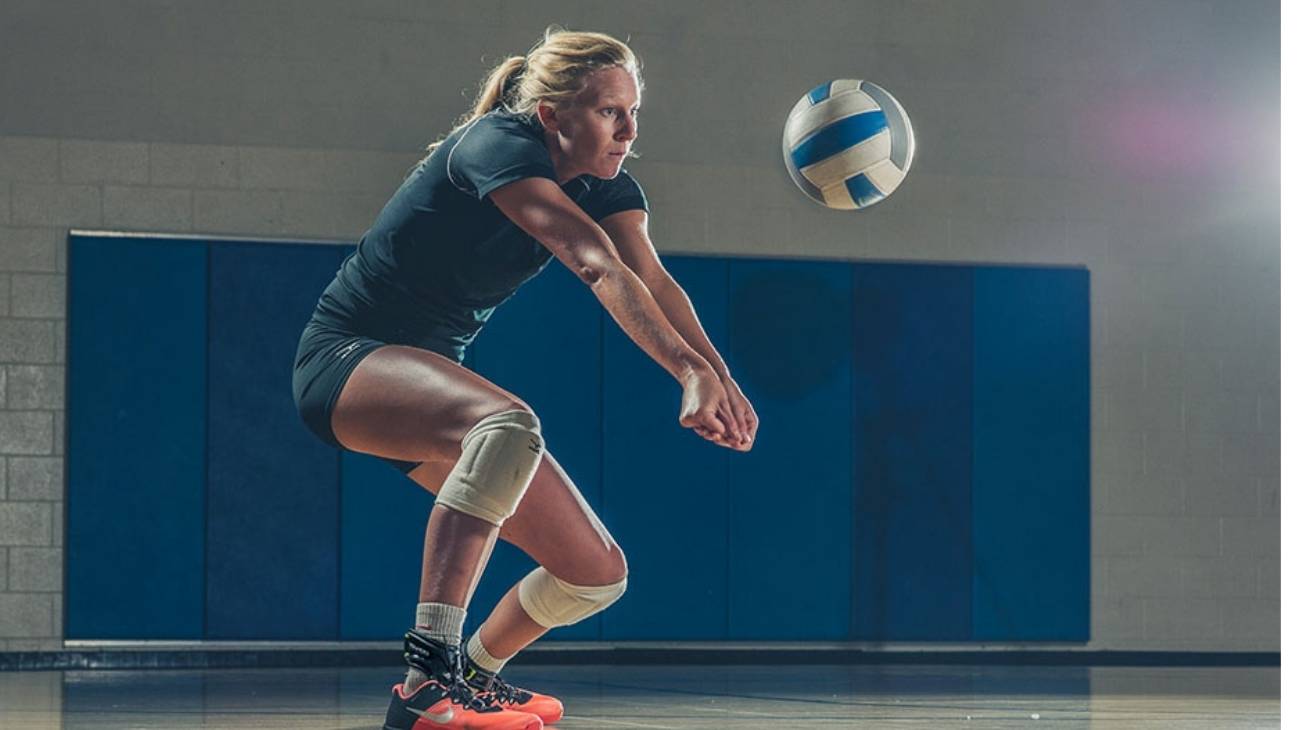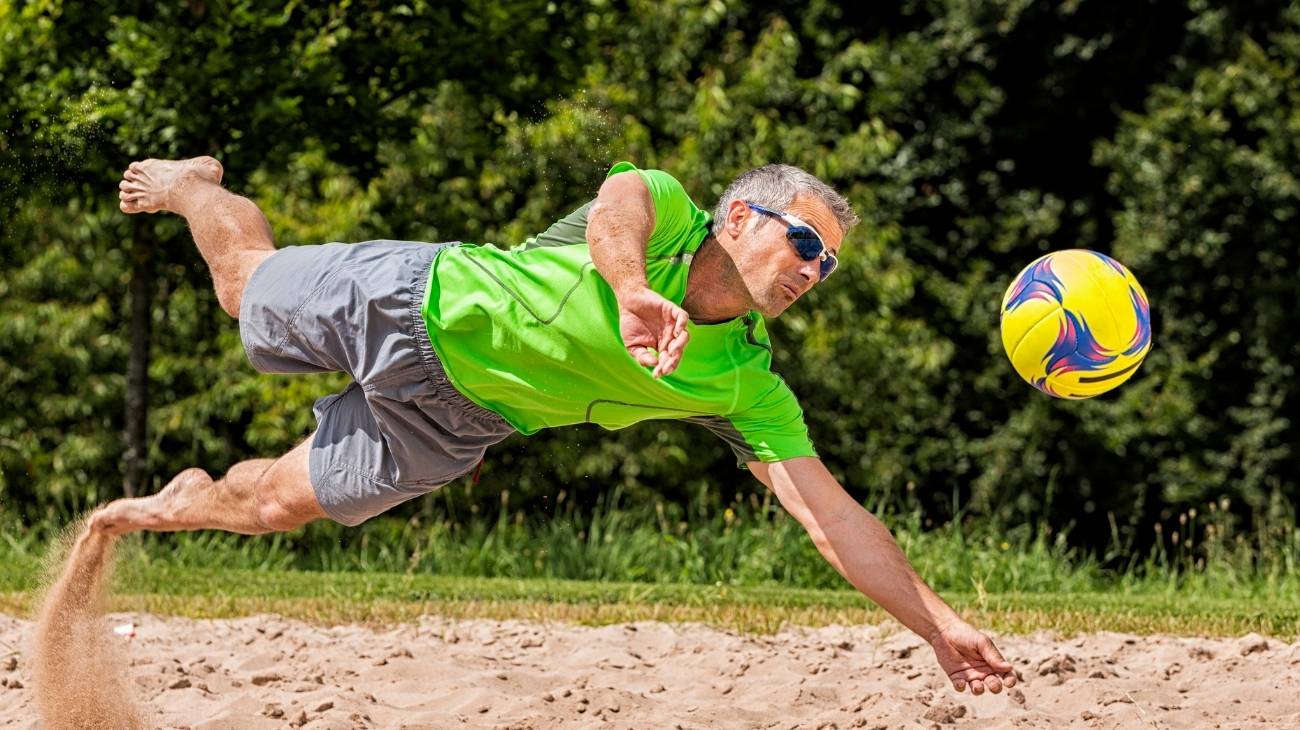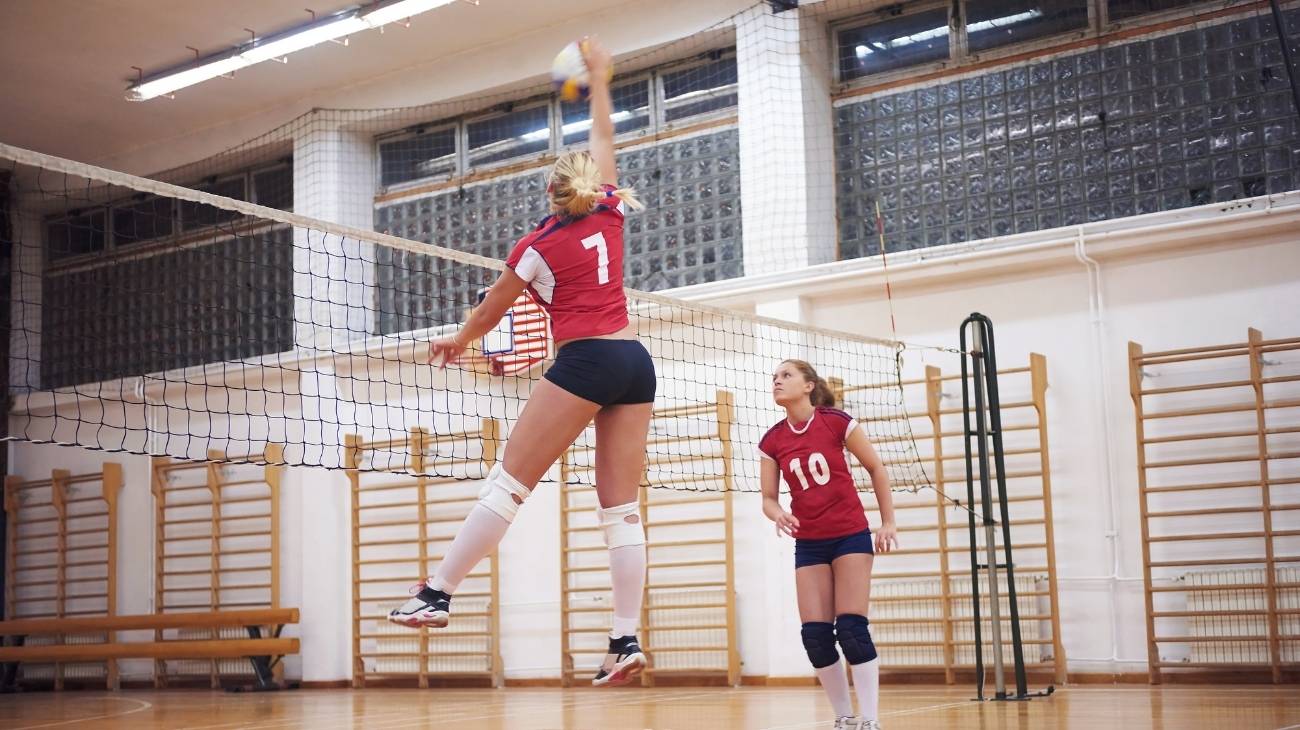Sports injuries are inevitable in most sports, and volleyball is not exempt from them. Fortunately, there are very good treatments for sports injuries in volleyball. A good recovery and the preservation of sporting performance in athletes will depend on them.
One of the best therapeutic methods that have been developed for the timely treatment of injuries is the RICE therapy. In the case of serious injuries, there are also novel surgical treatments. If you are a professional or amateur volleyball player you should know them in depth, and in this post we will tell you about them.
What are the most common types of injuries when playing volleyball?
Volleyball is a sport where there is no direct contact with the opponent and therefore injuries are usually minor. However, although it is a team sport its players cannot escape them. Sports injuries in volleyball appear due to the level of physical demand that this sport has.
In volleyball, there are many sudden movements that are constantly repeated. Volleyball requires intense training and loads that have a negative impact on them if they are not properly trained.
Here are some of the most common injuries:
- Rotator cuff tendinitis: Rotator cuff injuries are caused by overhead movements. These are repetitive movements with force to block and serve with the ball generating partial or total tears in these tendons. This causes inflammation, deep pain, inability to raise the arm accompanied by a lot of weakness.
- SLAP tear: This is the result of an incomplete or complete tear at the level of the Labrum fibrocartilage. In volleyball, it is caused by falling with the arm extended in abduction and with slight flexion. It is also caused by repetitive throwing movements with inadequate technique. This type of injury causes intense and non-specific pain in the shoulder, especially when trying to raise it over the head, and a lot of stiffness.
- Shoulder impingement: This is an injury that causes pinching of the soft tissues of the shoulder by compression at the level of the shoulder joint. It can be caused by bone calcifications, capsular tension and rotator cuff weakness. Symptoms include severe pain when raising the arms and stiffness.
- Wrist sprain: This injury is known as "open wrist" and is due to a strain, tear or rupture of the ligaments in this joint. It results from a high level of training, overuse of the joint or accidents, such as falls or trauma while training. This results in inability to move the joint, severe pain and swelling.
- Fractures, dislocations and sprains in the fingers: This area often suffers from the impact of the ball or the ball hitting the fingertips. These occur due to the fragile structure of the phalanges of the fingers while spiking, serving and blocking. In this type of injury the symptoms are severe pain, deformity and enlargement accompanied by inability to move them.
- Patellar tendonitis: This is an inflammation, due to micro-tears or micro-tears of the patellar tendon, which joins the tibia to the kneecap. These are produced by the movements of dives, spikes and blocks as a response of the organism to repair the injury produced. This causes severe pain above and below the kneecap and decreased strength in the thigh.
- Anterior cruciate ligament injury: This is one of the most serious injuries commonly sustained by volleyball players. It is caused by hard jumps and awkward falls on outstretched feet that result in tearing or rupturing of this ligament. It usually causes a loud popping sound in the knee, severe pain, swelling and difficulty kneeling, bending or sitting.
- Ankle sprain: This is one of the most common volleyball injuries. It is usually caused by a strain, partial or total tear of the ligaments that make up this joint due to falls or loss of balance. It has different forms of presentation depending on the degree. Grade I causes ligament strain, grade II causes a partial tear and grade II causes a total rupture.
- Achilles tendonitis: This is the inflammation of the Achilles tendon caused by overloading the calves. It is due to intense sporting practices, but with a long distance in terms of recurrence. This causes microtears at the level of this structure generating a lot of pain at the level of the back of the leg and stiffness.
- Plantar fasciitis: It is an inflammation at the level of the plantar fascia caused by movements such as repeated jumps or the use of inappropriate footwear. This generates excessive tension on the fascia that can also cause partial or total tears. Generally, it causes a morning pain in the heel and sole of the foot accompanied by burning and worsens with exercise.
- Low back pain: This is caused by contractures in the muscles and ligaments of the lower back. Also, inflammation of the nerves and vertebral discs caused by rapid twisting and hyperextension of the spine. Athletes feel severe pain in the lower back that can spread to the legs.
- Muscle contractures and tears: These injuries can occur in any muscle in the body, especially in the upper limbs, lower limbs and back. Their causes can be multiple, but they are generally caused by trauma, muscle overload, decreased blood flow or water-electrolyte imbalances. It is characterised by muscle shortening, intense pain and a lump in the affected muscle.
Best products for volleyball injury recovery
Bestseller
-
2 Ankle Compression Sleeve (Black/Gray)
$19.95 -
2 Ankle Compression Sleeve (Green/Navy)
$19.95 -
2 Ankle Compression Sleeve (Pink/Bordeaux)
$19.95 -
2 Calf Compression Sleeve (Black/Gray)
$19.95 -
2 Calf Compression Sleeve (Green/Navy)
$19.95 -
2 Calf Compression Sleeve (Pink/Bordeaux)
$19.95 -
2 Knee Compression Sleeve (Black/Gray)
$19.95 -
2 Knee Compression Sleeve (Green/Navy)
$19.95 -
2 Knee Compression Sleeve (Pink/Bordeaux)
$19.95 -
2 Patella Knee Strap (Black/Gray)
$14.95 -
2 Patella Knee Strap (Green/Navy)
$14.95 -
2 Patella Knee Strap (Pink/Bordeaux)
$14.95 -
2 Thigh Compression Sleeve (Black/Gray)
$19.95 -
2 Thigh Compression Sleeve (Green/Navy)
$19.95 -
2 Thigh Compression Sleeve (Pink/Bordeaux)
$19.95 -
Acupressure Mat and Pillow (Black/Gray)
$49.95 -
Acupressure Mat and Pillow (Green/Navy)
$49.95 -
Acupressure Mat and Pillow (Pink/Bordeaux)
$49.95 -
Acupressure Pillow (Black/Gray)
$29.46 -
Acupressure Pillow (Green/Navy)
$29.46 -
Acupressure Pillow (Pink/Bordeaux)
$29.46 -
Foot Massage Roller for Plantar Fasciitis (Black)
$19.95 -
Foot Massage Roller for Plantar Fasciitis (Green)
$19.95 -
Foot Massage Roller for Plantar Fasciitis (Pink)
$19.95 -
High Density Foam Roller for Muscle (Black/Gray)
$29.95 -
High Density Foam Roller for Muscle (Green/Navy)
$29.95 -
High Density Foam Roller for Muscle (Pink/Bordeaux)
$29.95 -
Ice Massage Roller Ball (Black)
$39.95 -
Ice Massage Roller Ball (Green)
$39.95 -
Ice Massage Roller Ball (Pink)
$39.95 -
Microwave Arthritis Gloves (2 Mittens) (Hearts)
$29.95 -
Microwave Arthritis Gloves (2 Mittens) (Oxford)
$29.95 -
Microwaveable Heating Pad for Pain Relief (Hearts)
$19.95 -
Microwaveable Heating Pad for Pain Relief (Oxford)
$19.95 -
Microwaveable Heating Pad for Pain Relief (Sport)
$19.95 -
Pack 2 In 1 Foam Roller High + Soft Density (Black/Gray)
$29.95 -
Pack 2 In 1 Foam Roller High + Soft Density (Green/Navy)
$29.95 -
Pack 2 In 1 Foam Roller High + Soft Density (Pink/Bordeaux)
$29.95 -
Shoulder Support Brace (Black)
$24.95 -
Shoulder Support Brace (Green)
$24.95 -
Shoulder Support Brace (Pink)
$24.95 -
Soft Density Foam Roller for Recovery (Black)
$29.95 -
Soft Density Foam Roller for Recovery (Green)
$29.95 -
Soft Density Foam Roller for Recovery (Pink)
$29.95 -
Sport Compression Socks (1 Pair) (Black/Gray)
$19.95 -
Sport Compression Socks (1 Pair) (Green/Navy)
$19.95 -
Sport Compression Socks (1 Pair) (Pink/Bordeaux)
$19.95 -
Trigger Point Massage Stick (Black)
$14.95 -
Trigger Point Massage Stick (Green)
$14.95 -
Trigger Point Massage Stick (Pink)
$14.95 -
Wrist Brace (Black/Gray)
$19.95 -
Wrist Brace (Green/Navy)
$19.95 -
Wrist Brace (Pink/Bordeaux)
$19.95
How to apply the RICE therapy to treat first aid injuries in volleyball?
Sports injuries have specific first aid techniques, the best known of which are the RICE therapy. Nowadays these techniques have been updated and form the PRICE therapy, but RICE is much better known. Its name derives from the acronym for the following words, Protection, Rest, Ice, Compression and Elevation.
- Protection: The first step in this method is protection of the injured area to prevent further injury or complications. This is done using orthoses, joint supports or elastic bandages.
- Rest: Protection should be combined with rest to ensure that blood flow to the area of injury is reduced. This prevents further swelling and pain so it is only recommended to use it for the first 48 hours. Rest should be relative to avoid excess stiffness in the affected area.
- Ice: Applying ice is very beneficial when injuries occur in the sport of volleyball. It has anti-inflammatory and analgesic properties and should be used for the first 72 hours, for 15 minutes 6 to 8 times a day. It is very useful to apply it with the help of cold compresses or gel-filled bags.
- Compression: A compressive bandage should then be applied to reduce swelling and provide better support. The bandage should be applied with adequate pressure to ensure the increase in volume caused by the excess fluid. Adequate compression also allows the soft tissues to be secured so that the affected area can be moved properly.
- Elevation: Finally, it is important to elevate the affected area to avoid pain and swelling. The limb or affected area should be raised 30 cm above the level of the heart to lower blood pressure. This technique also allows us to increase venous return to reduce pain and oedema.
Surgical treatments for severe or chronic injuries in volleyball players
Some more severe or chronic injuries are not usually resolved using the PRICE method. These require surgical treatment to restore mobility and performance to volleyball players. However, most surgeries are usually very simple and guarantee the athlete a quick recovery:
Shoulder injuries
The shoulder is one of the most important parts of volleyball. The shoulder handles most of the serving and blocking movements and is therefore susceptible to tears and ruptures. Overuse injuries lead to chronic injuries such as rotator cuff tendonitis, the surgical procedure is:
- Shoulder arthroscopy: This is a surgery designed to visualise and repair the structures that make up the shoulder joint. It is a very simple procedure where an incision is made around the joint. The arthroscope is then inserted to repair all the damaged tissues.
Hand and finger injuries
The hands and fingers are two of the areas most susceptible to injury during volleyball. Wrist tendinitis tends to occur due to the overloading of this joint. In the case of the fingers it is very common for fractures, tears and ruptures of ligaments and tendons to occur.
Surgical solutions for these injuries are as follows:
- Reduction and fixation surgery: these can be used in case of fractures at the level of the wrist, hand or finger bones. They are used to align and immobilise the fractured bones. For these, internal devices, tubes, wires and splints are used.
- Open repair surgery: In the case of severe and chronic tendon and ligament injuries, open surgeries are used. This surgery can be primary when performed within the first 24 hours or secondary when performed on chronic injuries. They can result in simple or very complex repairs and usually lead to slow recoveries.
Ankle and foot injuries
Most ankle and foot injuries recover with physiotherapy and conservative treatment. When this does not work then surgical procedures are required to allow adequate tissue repair. The most commonly used procedures at present are:
- Ankle arthroscopy: This procedure allows repair of all structures at the ankle joint level. It is very useful in the repair of ligaments, tendons and any type of serious or chronic injury at the joint level. The results of this surgery are usually very satisfactory and most athletes return to their normal routine.
- Open reconstruction surgery: This is another treatment option for ligament and tendon repair, although recovery is slower. It is very useful in plantar fasciitis, especially when there is a significant tear in the plantar fasciitis. An incision is made around the ankle to expose the damaged structures for repair.
References
- Eerkes, K. (2012). Volleyball injuries. Current sports medicine reports, 11(5), 251-256. https://journals.lww.com/acsm-csmr/Fulltext/2012/09000/Volleyball_Injuries.10.aspx
- Verhagen, E. A. L. M., Van der Beek, A. J., Bouter, L. M., Bahr, R. M., & Van Mechelen, W. (2004). A one season prospective cohort study of volleyball injuries. British journal of sports medicine, 38(4), 477-481. https://bjsm.bmj.com/content/38/4/477.short
- Bahr, R., & Reeser, J. C. (2003). Injuries among world-class professional beach volleyball players: the Federation Internationale de Volleyball beach volleyball injury study. The American journal of sports medicine, 31(1), 119-125. https://journals.sagepub.com/doi/abs/10.1177/03635465030310010401
- Bahr, R., & Bahr, I. A. (1997). Incidence of acute volleyball injuries: a prospective cohort study of injury mechanisms and risk factors. Scandinavian journal of medicine & science in sports, 7(3), 166-171. https://onlinelibrary.wiley.com/doi/abs/10.1111/j.1600-0838.1997.tb00134.x
- Agel, J., Palmieri-Smith, R. M., Dick, R., Wojtys, E. M., & Marshall, S. W. (2007). Descriptive epidemiology of collegiate women's volleyball injuries: National Collegiate Athletic Association Injury Surveillance System, 1988–1989 through 2003–2004. Journal of athletic training, 42(2), 295-302. https://cdr.lib.unc.edu/concern/articles/4b29bc963
- Briner Jr, W. W., & Benjamin, H. J. (1999). Volleyball injuries: managing acute and overuse disorders. The Physician and sportsmedicine, 27(3), 48-60. https://www.tandfonline.com/doi/abs/10.3810/psm.1999.03.720
- Reeser, J. C., & Bahr, R. (2011). Principles of prevention and treatment of common volleyball injuries. WEB-ресурс Fédération Internationale de Volleyball (FIVB). URL: http://www. fivb. org/en/medical/document/fivb_medical_injury_prevention. pdf(дата обращения 3.04. 2015). https://www.volleyballalberta.ca/sites/default/files/sites/Leadership/Coaches/Resources/Injury_Prevention-FIVB.pdf
- Schafle, M. D. (1993). Common injuries in volleyball: treatment, prevention and rehabilitation. Sports Medicine, 16(2), 126-129. https://link.springer.com/article/10.2165/00007256-199316020-00004
- Reeser, J. C., & Bahr, R. (Eds.). (2017). Handbook of sports medicine and science, Volleyball. John Wiley & Sons. https://books.google.es/books?hl=en&lr=&id=ehqACgAAQBAJ
- Reeser, J. C., Verhagen, E. A. L. M., Briner, W. W., Askeland, T. I., & Bahr, R. (2006). Strategies for the prevention of volleyball related injuries. British journal of sports medicine, 40(7), 594-600. https://bjsm.bmj.com/content/40/7/594.short














































